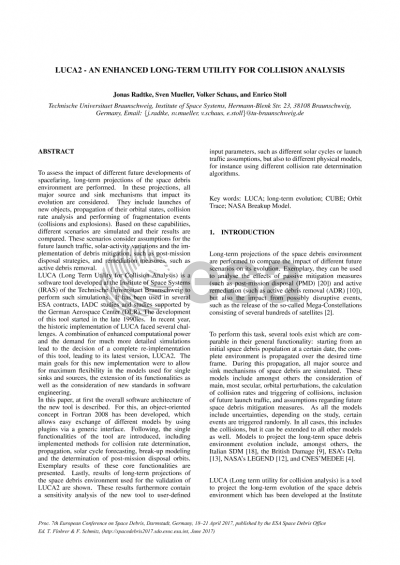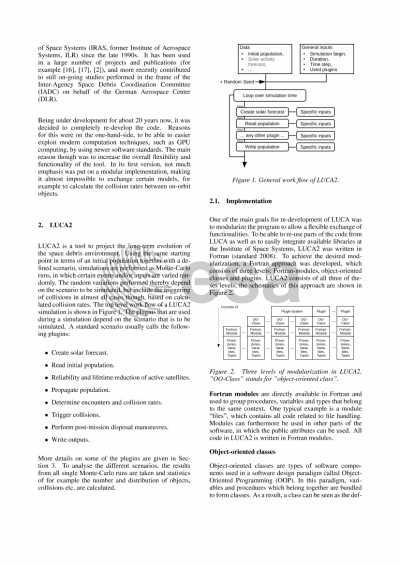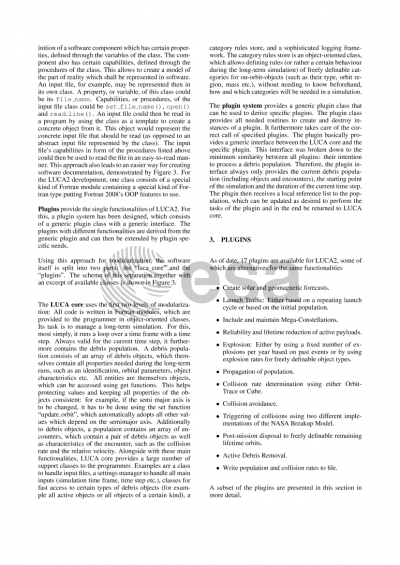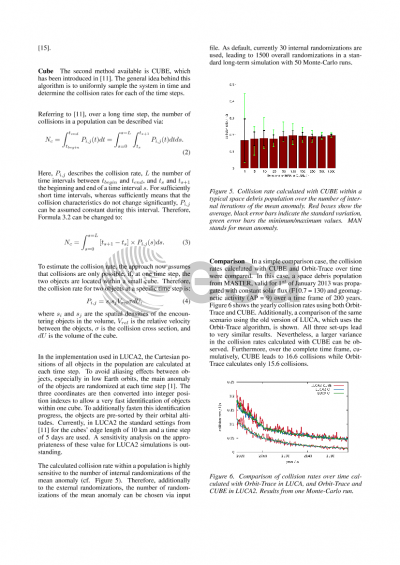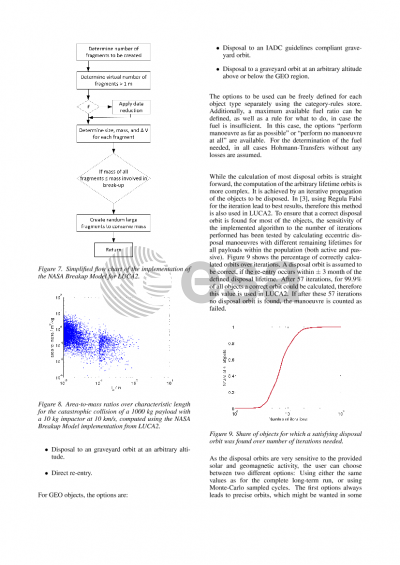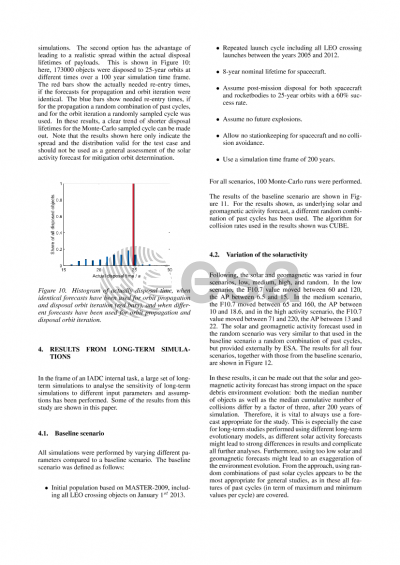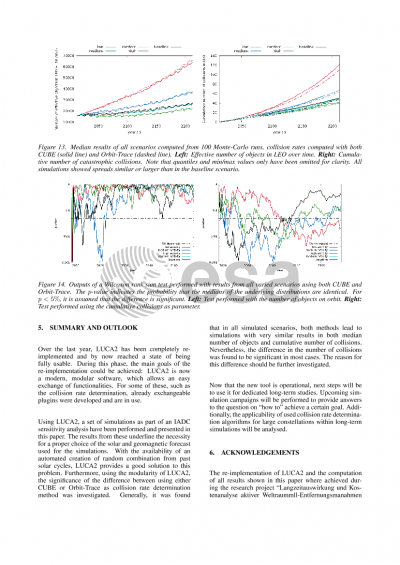Document details

Abstract
To assess the impact of different future developments of spacefaring, long-term projections of the space debris environment are performed. In these projections, all major source and sink mechanisms that impact its evolution are considered. They include launches of new objects, propagation of their orbital states, collision rate analysis and performing of fragmentation events (collisions and explosions). Based on these capabilities, different scenarios are simulated and their results are compared. These scenarios consider assumptions for the future launch traffic, solar-activity variations and the implementation of debris mitigation, such as post-mission disposal strategies, and remediation measures, such as active debris removal.
LUCA (Long Term Utility for Collision Analysis) is a software tool developed at the Institute of Space Systems (IRAS) of the Technische Universitaet Braunschweig to perform such simulations. It has been used in several ESA contracts, IADC studies and studies supported by the German Aerospace Center (DLR). The development of this tool started in the late 1990ies. In recent year, the historic implementation of LUCA faced several challenges. A combination of enhanced computational power and the demand for much more detailed simulations lead to the decision of a complete re-implementation of this tool, leading to its latest version, LUCA2. The main goals for this new implementation were to allow for maximum flexibility in the models used for single sinks and sources, the extension of its functionalities as well as the consideration of new standards in software engineering.
In this paper, at first the overall software architecture of the new tool is described. For this, an object-oriented concept in Fortran 2008 has been developed, which allows easy exchange of different models by using plugins via a generic interface. Following, the single functionalities of the tool are introduced, including implemented methods for collision rate determination, propagation, solar cycle forecasting, break-up modeling and the determination of post-mission disposal orbits. Exemplary results of these core functionalities are presented. Lastly, results of long-term projections of the space debris environment used for the validation of LUCA2 are shown. These results furthermore contain a sensitivity analysis of the new tool to user-defined input parameters, such as different solar cycles or launch traffic assumptions, but also to different physical models, for instance using different collision rate determination algorithms.
Preview
